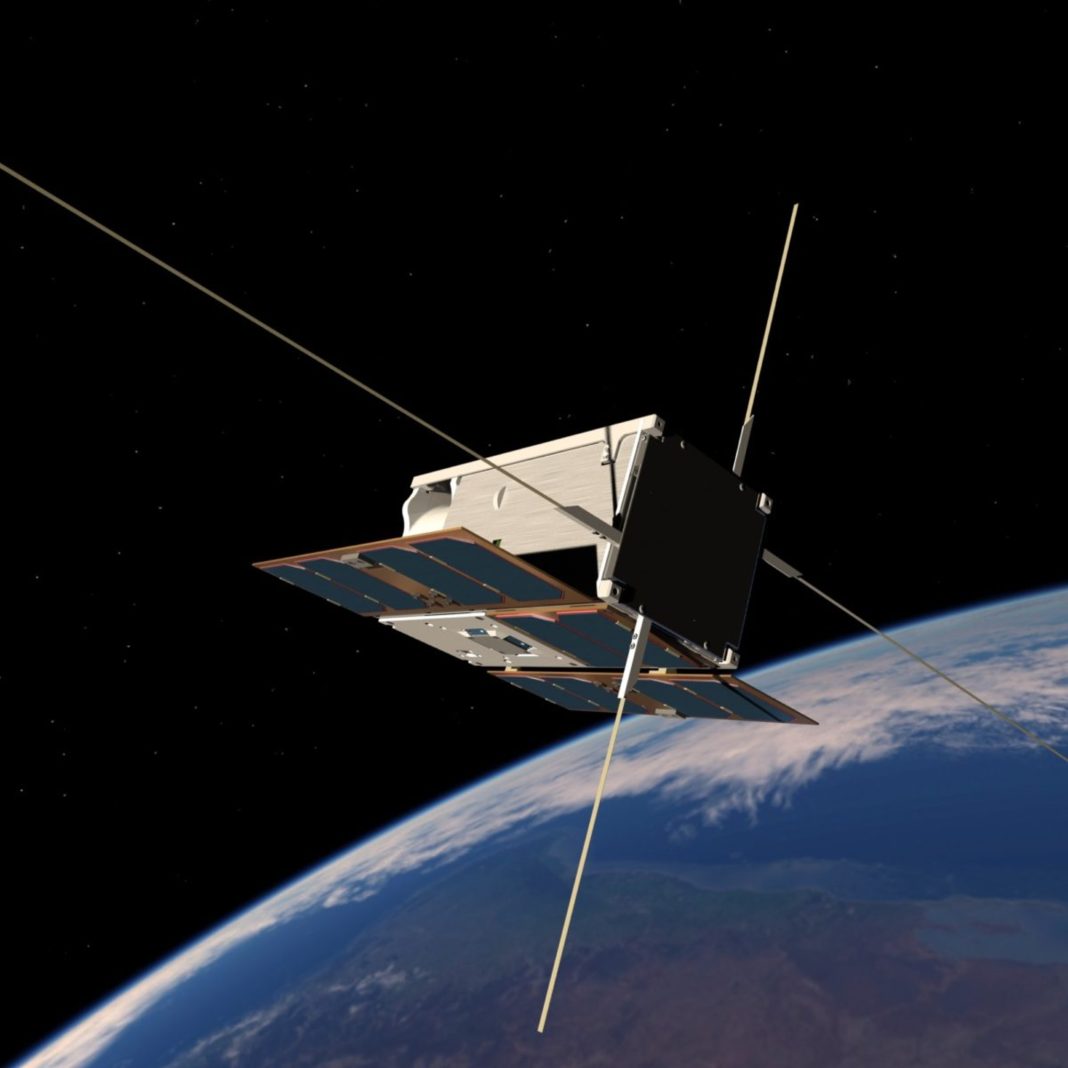NASA’s TRACERS mission has recently launched to explore how Earth’s magnetic shield defends the planet against the effects of space weather. The two satellites are designed to study magnetic reconnection, a crucial process that shapes space weather and influences events like auroras and satellite disturbances. Operating in low Earth orbit, the TRACERS spacecraft will travel through the polar cusp regions, where the solar wind directly interacts with Earth’s magnetosphere.
The NASA TRACERS Mission
The NASA TRACERS Mission stands for Tandem Reconnection and Cusp Electrodynamics Reconnaissance Satellites. It is a special space science program designed to study Earth’s magnetic shield and a unique region known as the polar cusp.
- Earth is protected by a magnetic field called the magnetosphere, which blocks harmful solar radiation.
- Near the North and South Poles, there are small openings in this shield called cusps.
- Through these cusps, energy and particles from the Sun can flow into Earth’s atmosphere.
The goal of the NASA TRACERS Mission is to send two small satellites into space to study these polar cusps and understand how solar energy affects our planet.
Why the NASA TRACERS Mission is Important
Understanding the connection between the Sun and Earth is important for several reasons. The NASA TRACERS Mission will give us answers to some of the most critical questions about space weather and its impact on our daily lives.
Space Weather and the NASA TRACERS Mission
The Sun constantly releases streams of charged particles known as the solar wind. When these particles interact with Earth’s magnetosphere, they create space weather.
- Space weather can disturb satellites, damage power systems, and interrupt GPS signals.
- Sometimes, strong space storms can even cause blackouts on Earth.
- By studying space weather, the NASA TRACERS Mission will help scientists protect technology and communication systems.
Auroras and the NASA TRACERS Mission
The northern lights and southern lights, also known as auroras, are caused by solar particles entering through the polar cusps.
- The mission will study how and why these lights appear in the sky.
- This will not only explain their beauty but also show how solar energy interacts with Earth’s atmosphere.
How the NASA TRACERS Mission Will Work
Satellites in the NASA TRACERS Mission
NASA will send two identical satellites into orbit. These satellites will:
- Fly through the polar cusp regions many times.
- Use instruments to measure solar particles such as electrons and protons.
- Record changes in magnetic and electric fields.
- Work together to give scientists a three-dimensional picture of energy flow.
Magnetic Reconnection and the NASA TRACERS Mission
One of the key focuses of the mission is a process called magnetic reconnection.
- Magnetic reconnection happens when the Sun’s magnetic field connects with Earth’s magnetic field.
- This creates a pathway for solar wind particles to enter Earth’s atmosphere.
- It is one of the most powerful ways energy is transferred from the Sun to Earth.
By observing this process, the NASA TRACERS Mission will help predict dangerous space weather events in the future.
Benefits of the NASA TRACERS Mission
The mission is expected to provide many benefits for both science and society.
Better Space Weather Forecasts
With more accurate data from the NASA TRACERS Mission, scientists can predict space storms earlier and more reliably. This will allow governments and industries to prepare and avoid damage.
Safer Astronaut Missions
As NASA plans more human missions to the Moon and Mars, it is essential to keep astronauts safe from harmful solar radiation. The mission will provide valuable information for future space exploration.
New Knowledge About Auroras
The NASA TRACERS Mission will give us a deeper understanding of auroras, turning their beauty into knowledge that explains the science behind them.
Challenges of the NASA TRACERS Mission
Like all space projects, this mission faces challenges that make it both complex and exciting.
- Harsh space environment: The satellites will work in extreme conditions.
- Sensitive instruments: The tools must measure very small and fast-moving particles.
- High costs: The mission requires careful planning, advanced technology, and a large budget.
Despite these challenges, NASA scientists believe the mission will succeed and bring groundbreaking results.
Timeline of the NASA TRACERS Mission
The NASA TRACERS Mission is scheduled for launch in the coming years. Once the satellites are in orbit, they will begin collecting data from the polar cusp regions and send it back to Earth. Scientists will then study the information to improve our understanding of space weather and Earth’s magnetic environment.
Conclusion
The NASA TRACERS Mission is a remarkable step in space science that promises to unlock the secrets of how the Sun and Earth interact. By studying magnetic reconnection, space weather, and auroras, this mission will not only advance our knowledge but also make life on Earth safer. It shows that space exploration is not just about distant planets—it is also about protecting our own world.
The NASA TRACERS Mission inspires us to learn more about the universe and reminds us that every discovery brings us closer to understanding the powerful connection between the Sun and Earth.




